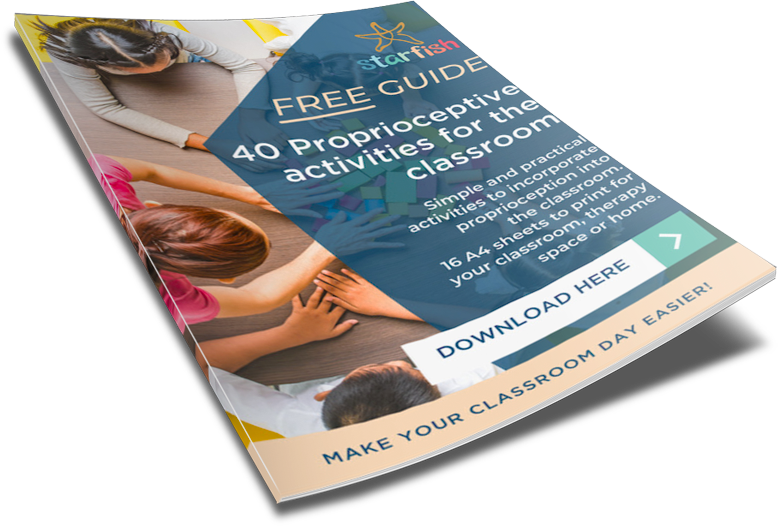Your Cart is Empty
Last chance to enter for the GOLDEN TICKET! Shop with Starfish for your chance at $500 💰

Trying to judge the level of difficulty of something, especially when it is easy for us, is something that can be a hard task in itself. Sometimes we have to stop and ask ourselves, is this too tricky for someone else? Is this book too hard for them?
Knowing your audience is key and critical to early stages of learning.
This is most important when teaching children. Presenting text that is far too difficult early in the piece can significantly erode confidence that is hard to shake.
One of the absolute no-brainers of our work here in our tutoring centre at Starfish is ensuring the level of a book is right for a child when they are learning to read.
The book most definitely should not be too hard.
You can find buckets of research to substantiate this, particularly for younger readers and those having difficulties learning to read. This is a great article that explores what research has taught us about text complexity and learning to read!
https://ila.onlinelibrary.wiley.com/doi/abs/10.1002/trtr.1280
In the meantime, we’re going to focus on how to get the level right.
There are generally two levels of reading books.
Let’s take a look at them both...
This is the ideal teaching one-to-one level of a text whilst children are learning to read.
For a book to be what we call an "Instructional Level" - most of the text is read fluently/easily but there may be a couple of 'errors' or points that could be used as the basis of a teaching moment.
An Instructional Level text would typically be used for those times where the reader is with a teacher (or reading instructor in the instance of tutoring or home schooling).
Most educators agree that an Instructional Level is where a reader can read the text with a level of between 90 - 95% accuracy.
That is, they read most words correctly......making less than 1 mistake every 10 words (but calculated over a decent slab of text, ideally a minimum of 100 words).
The most recent research suggests that in the early stages of learning to read, the level of accuracy should be in fact a little higher than 90-95% (and that this brings improved results, faster).
This is the optimal level for books children can read on their own. For example silent reading time and reading at home or just reading for enjoyment and practice.
For books to be at an Independent Level, a reader should be reading it at an accuracy level of at least 95%.
I can't stress this enough.
If books are too hard, kids might lose enthusiasm for reading. Sometimes in our attempts to 'encourage' our kids to get into reading, we mistakenly get them the wrong books. The whole thing can be soul destroying.
So how can you tell? Simple.
But how do I work out the accuracy? Again, simple. Let’s take a look...
There is a simple and quick method when trying to choose a book, say in a bookshop or library, called the ‘Five Finger Rule’.
Here’s what to do:
Generally put one finger out for every mistake or error without self correction. Then one more finger if another mistake is made.
If after one page you have 5 or more fingers up (so five mistakes or errors), the book is definitely too hard.
Check out our very own, easy to use guide to the five finger rule below...



A more detailed method of assessing the accuracy or level of a book for any reader is to take what we call a ‘Running Record’.
In a nutshell, you give a tick for every correct word, and record if they make a mistake. Then you will end up with a tally of how many correct words and how many errors.
Then add up the number of words they got correct and work out the percentage.
If the reader makes a mistake and then fixes it, even if it’s a few words later, the original mistake is NOT counted as an error. This is called self-correcting.
Self-corrections are a desirable behaviour and should be encouraged!
You can see me taking a real running record in the following clip with the gorgeous Oscar...
 Here's Oscar's running record for that session.
Here's Oscar's running record for that session.
You can see the level of accuracy in this case was 97%, which means it is at an Independent Level and Oscar is ready to go up to a higher instructional level.
I don't always stick to the conventions of taking a Running Record, especially if I'm just after a quick check of whether a reader is ready to go up in instructional level during tutoring.
When reading a book if the level of 'accuracy' is:
Above all, it is vital that children are not exposed to reading material that is the wrong level.
Choosing books at the right reading level can help your child get better at reading—and learn to enjoyreading. Books that are too challenging can discourage kids. Books that are too easy don’t give enough opportunity for practice and growth.
Reading is such a magical skill. Getting it right early on can lead to a love and passion that will be with them for life.
Looking for something to get them started even earlier? LCBF Easy Words to Sound Bingo is an amazing product to get young minds prepped and stimulated for reading. And it's super fun!

40 Proprioceptive activities for the classroom. Simple and practical activities to incorporate Proprioceptive into the classroom. 16 A4 sheets to print for your classroom, therapy space or home.